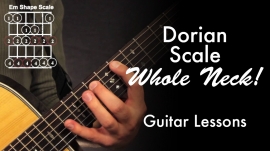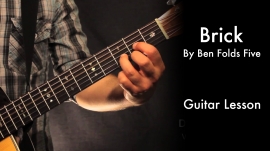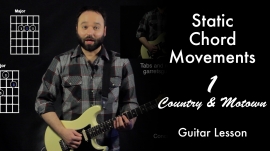Here’s a quick explanation about Diatonic Substitutions and a way that you can use them.
The big take away is:
I (1) can be substituted for a iii (3) or vi (6)
IV (4) can be substituted for a ii (2)
V (5) can be substituted for vii (7)
-“Huh? Why?”-
One of the main reasons is just how close the notes of each of those chords are. Let’s take a look at the Key of G:
I | G Chord = G-B-D
iii | Bm Chord = B-D-F#
vi | Em Chord = E-G-B
If we take a look at those chords we’ll see that both the iii and vi are only one note off from the I chord… cool!
Now the big player here is what note the melody falls on or doesn’t fall on. If the melody of a song hangs on the D note in a hypothetical song, then we probably want to stick to a I or a iii, because those chords have a D note, while the vi doesn’t. Also, I don’t think these sound as good with Blues I-IV-V’s… mainly songs that mainly revolve around I-IV-V like “Brown Eyed Girl”, “Yankee Doodle” or something.
The example I use is Silent Night, because well… everyone knows Silent Night. I have a chart of Silent night using just I-IV-V’s below and the Diatonic Substitution example I go through in this. Dig!
-Related Lessons-
1:30 – Building Chords?! | UGT 2/8
1:55 – Transposing (Chords as Numbers)?! | UGT 5/8
1:55 – What’s a Scale?! | UGT 1/8
2:15 – Building Chords?! | UGT 2/8
2:15 – Playing Open Chords | BO 4/10
2:15 – 6th String Barre Chords | BO 9/10
2:15 – 5th String Barre Chords | BO 10/10
3:15 – Building Chords?! | UGT 2/8
3:38 – Extended (7 9 11 13) Chords?! | UGT 3/8
4:54 – Intro to Chord Melody | Layla Outro
6:37 –Diminished Arpeggios & Chords
PDF’s
Diatonic Substitutions, Theory, Open & Barre Chords, & Diminished




